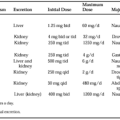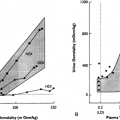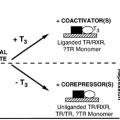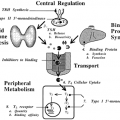TYRANNY OF HORMONE TERMINOLOGY
Hormones usually are named at the time of their discovery. Sometimes, the names are based on the locations where they were first found or on their presumed effects. However, with time, other locations and other effects are discovered, and these new locations or effects often are more physiologically relevant than the initial findings. Hormonal names are often overly restrictive, confusing, or misleading.
In many instances, such hormonal names have become inappropriate. For example, atrial natriuretic hormone is present in the brain, hypothalamus, pituitary, autonomic ganglia, and lungs as well as atrium, and it has effects other than natriuresis (see Chap. 178). Gastrin-releasing peptide is found in semen, far from the site of gastrin release. Somatostatin, which was found in the hypothalamus and named for its inhibitory effect on growth hormone, occurs in many other locations and has multiple other functions (see Chap. 169). Calcitonin, which initially was thought to play an important role in regulating serum calcium and was named accordingly, appears to exert many other effects, and its influence on serum calcium may be quite minor (see Chap. 53). Growth hormone–releasing hormone and arginine vasopressin are found in the testis, where effects on growth hormone release or on the renal tubular reabsorption of water are most unlikely. Vasoactive intestinal peptide is found in multiple tissues other than the intestines (see Chap. 182). Insulin, named for the pancreatic islets, is found in the brain and elsewhere.19 Prostaglandins have effects that are far more widespread than those exerted in the secretions of the prostate, from which their name derives (see Chap. 172).
Stay updated, free articles. Join our Telegram channel

Full access? Get Clinical Tree








